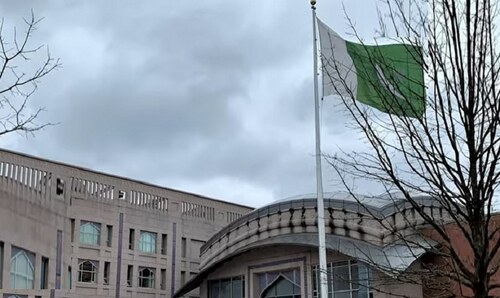The abandoned embassy building of Pakistan in Washington, D.C., has finally been sold for $7.1 million, confirmed both the buyers and the embassy on Thursday. The building, which had been vacant since 2003, was declared a “blighted property” by the local government and lost its diplomatic status in 2018, becoming a liability for the embassy. The property was purchased by Pakistani American businessman Hafeez Khan from Dallas.
Ambassador Masood Khan of Pakistan officially confirmed the sale during a ceremony held at a hotel in Washington, expressing hope that this would put an end to media speculations surrounding the property. He clarified that while the sold building would undergo extensive restoration, other buildings in the embassy’s possession were not for sale, although one of them still remained vacant.
Hafeez Khan, the purchaser, shared his emotional attachment to the property, stating, “When I heard about the sale, I thought it should be purchased by a Pakistani American because we have an emotional attachment to this property. That’s why I purchased it.” The building, located in Washington’s diplomatic enclave, previously served as a chancery and was put up for auction in late 2022. The government received three bids and accepted one initially but later halted the process without providing any explanation.
The highest bid received was $6.8 million, exceeding the pre-auction evaluation benchmark of $4.5 million. Over the years, the unoccupied building suffered from neglect, leading to deterioration. In 2010, then-Prime Minister Yousaf Raza Gillani approved a $7 million loan from the National Bank of Pakistan for its repairs along with another embassy building. While some of the loan was used to restore the main building, the abandoned property was left to decay. The main building, despite being repaired at a cost of over a million dollars, also remains vacant.
Real estate experts have warned that the money spent on restoring the building would go to waste if its fate is not determined soon. With the sale now finalized, the hope is that the extensive restoration process will breathe new life into the building, allowing for its future use and preventing further deterioration.


